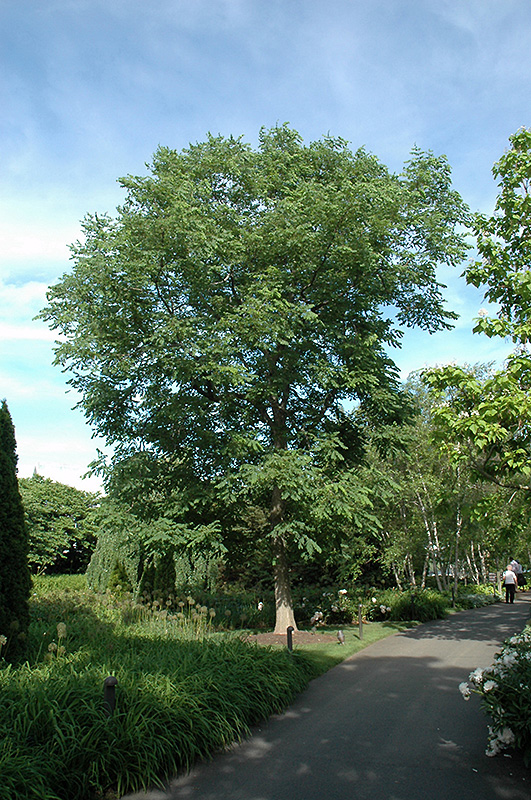Height: 50 feet
Spread: 30 feet
Sunlight:
![]()
Hardiness Zone: 3b
Other Names: Kentucky Coffee Tree
Brand: J. Frank Schmidt & Son Co.
Description:
A stately large shade tree with massive yet delicate compound leaves; a seedless cultivar; rather coarse outline when young and when bare in winter, but very attractive when in leaf; tolerant of adverse growing conditions; for larger landscapes
Ornamental Features
Espresso™ Kentucky Coffeetree is primarily valued in the landscape for its ornamental globe-shaped form. It has forest green deciduous foliage. The large bipinnately compound leaves do not develop any appreciable fall color. The rough dark brown bark adds an interesting dimension to the landscape.
Landscape Attributes
Espresso™ Kentucky Coffeetree is a deciduous tree with a more or less rounded form. Its strikingly bold and coarse texture can be very effective in a balanced landscape composition.
This is a relatively low maintenance tree, and is best pruned in late winter once the threat of extreme cold has passed. It has no significant negative characteristics.
Espresso™ Kentucky Coffeetree is recommended for the following landscape applications;
- Shade
- Vertical Accent
Planting & Growing
Espresso™ Kentucky Coffeetree will grow to be about 50 feet tall at maturity, with a spread of 30 feet. It has a high canopy with a typical clearance of 7 feet from the ground, and should not be planted underneath power lines. As it matures, the lower branches of this tree can be strategically removed to create a high enough canopy to support unobstructed human traffic underneath. It grows at a slow rate, and under ideal conditions can be expected to live for 90 years or more.
This tree should only be grown in full sunlight. It is very adaptable to both dry and moist locations, and should do just fine under average home landscape conditions. It is considered to be drought-tolerant, and thus makes an ideal choice for xeriscaping or the moisture-conserving landscape. It is not particular as to soil type or pH. It is somewhat tolerant of urban pollution. This is a selection of a native North American species.
A NetPS Plant Finder tool
